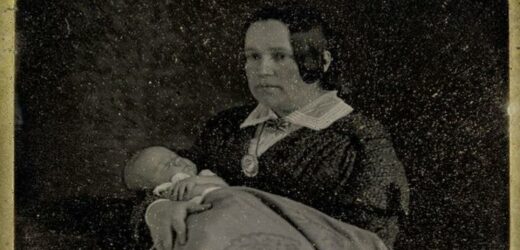
We use your sign-up to provide content in ways you’ve consented to and to improve our understanding of you. This may include adverts from us and 3rd parties based on our understanding. You can unsubscribe at any time. More info
The Victorians certainly had a fascination with death and revelled in the different ways they could keep the memory of dead loved ones alive, from locks of hair displayed artistically within jewellery to plaster cast masks of a person’s face.
This eventually evolved into the phenomenon of post-mortem photography – images of dead relatives arranged in a lifelike pose, sometimes even with eyes having been painted on to mimic the impression of life.
Now we may shudder at the thought of having a photograph taken sat next to or holding hands with a dead person, but it was commonplace in the 19th century.
This was because death was so prevalent during the Victorian era, short life expectancies coupled with extraordinarily high mortality rates were the norm.
People lived to an average age of just 40 thanks to extreme poverty, unsanitary conditions and a lack of basic healthcare which resulted in cases of diphtheria, typhus, cholera and tuberculosis claiming many victims.
Today, the images may appear to be morbid but Victorian people used them as a source of comfort and a way to remember loved ones after they died.
According to the Mirror, It is believed that the first post-mortem photograph was captured in 1841 and the images originally saw subjects laid to rest, appearing as if they were asleep.
DON’T MISS
Locals use vehicles to barricade fly-tippers in[UK]
Fury after SNP politician says Jacob Rees-Mogg will ‘rot in hell’[UK]
French to be overtaken as most popular language class in UK schools[UK]
After 1860, it become more popular to pose the dead as if they were awake by propping them up on a chair and painting eyes onto the corpse’s eyelids.
The demand for post-mortem photography began to diminish as photography became cheaper and more commonplace, so families were more likely to have plenty of photographs of their loved one while they were alive.
Medical advancements also meant people were living longer and far fewer children died in infancy, which in turn made more people squeamish about death.
Additional reporting by Olivia Rose Fox.
Source: Read Full Article


